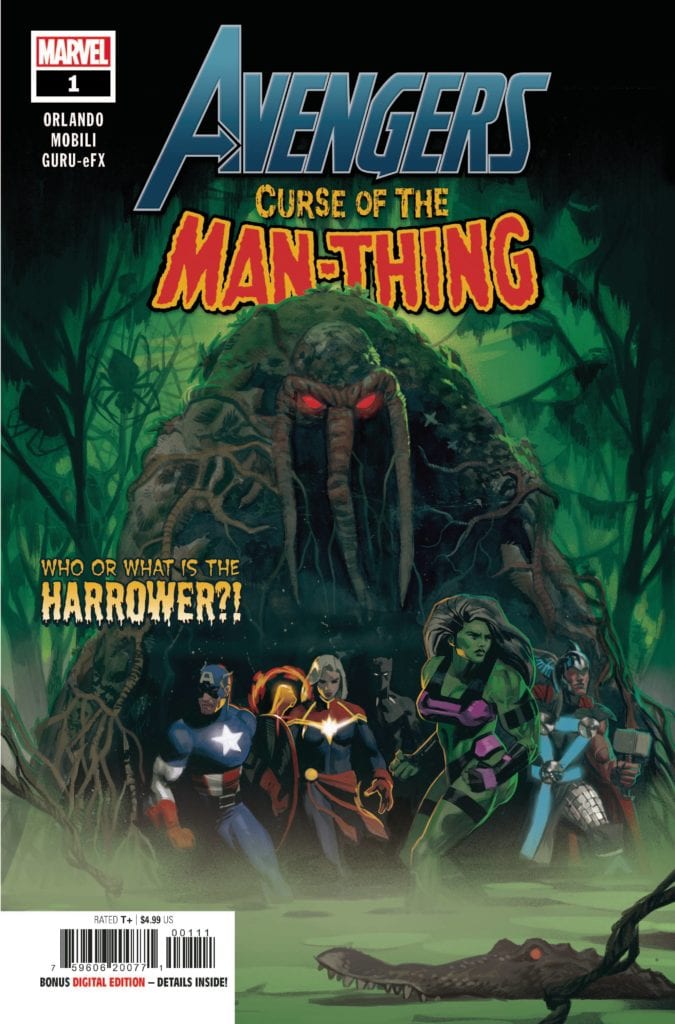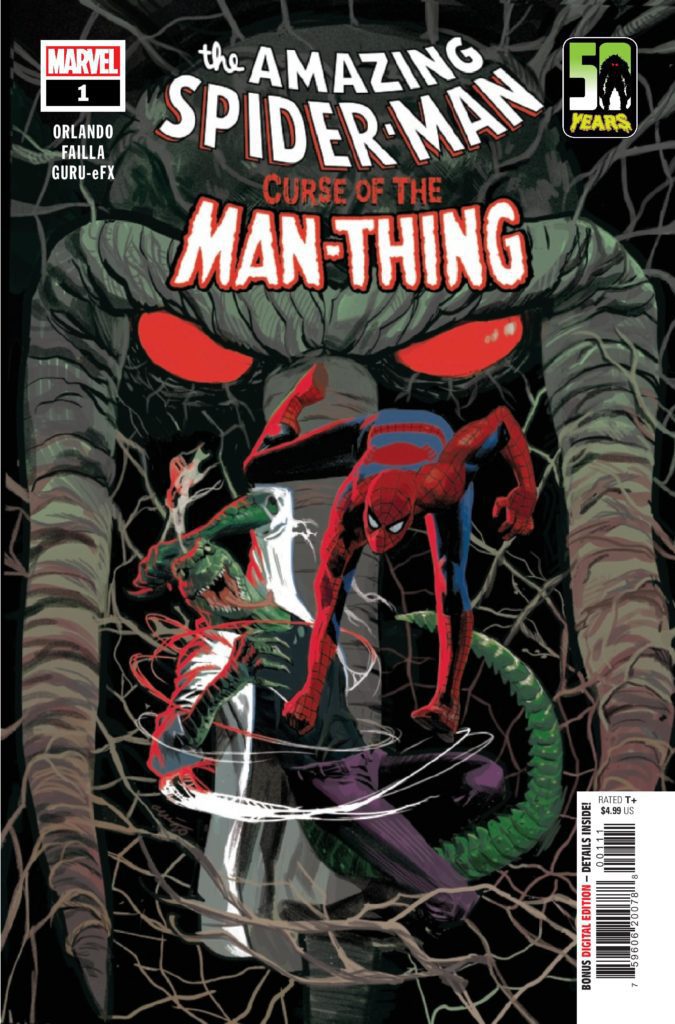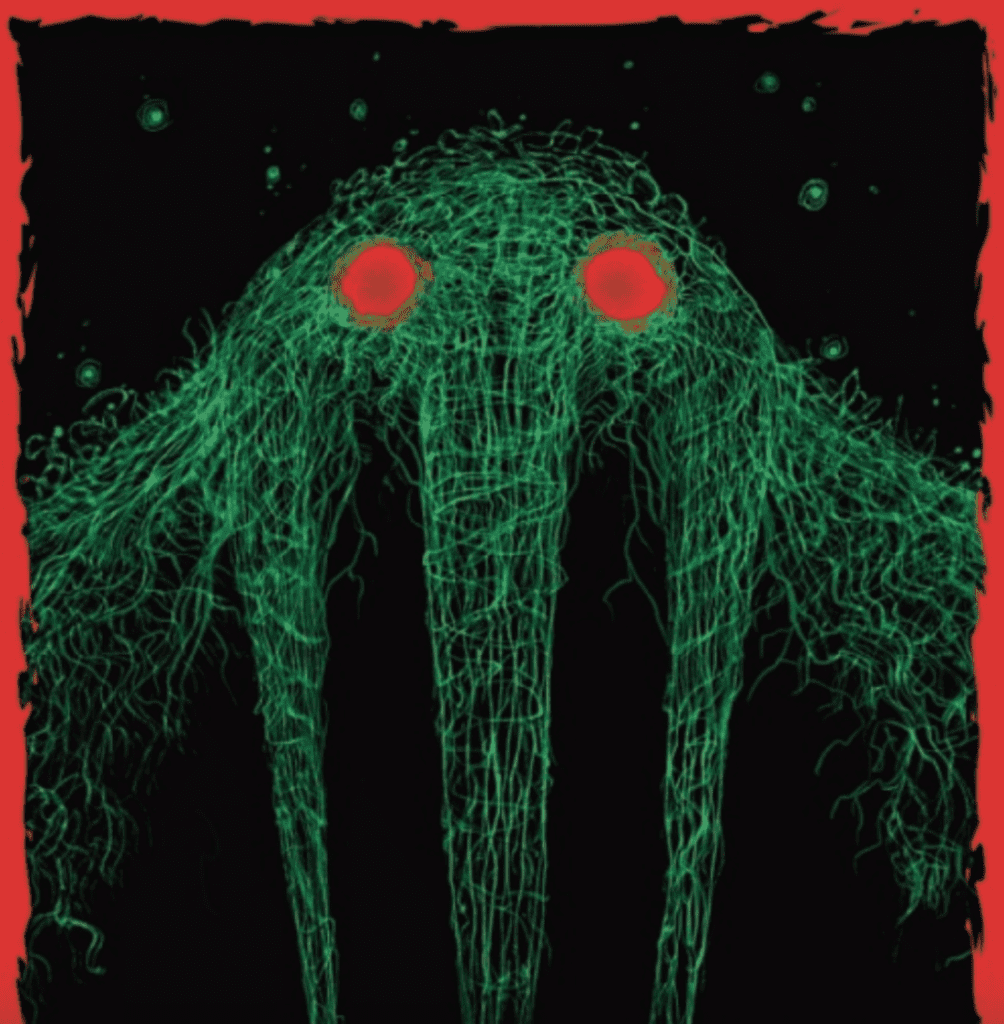Curse of the Man-Thing was a mini-crossover series focusing on the titular muck monster. Being a C-list Marvel Comics character with a divisive reputation, it’s difficult for mainstream publishers to endorse him. So Steve Orlando and his creative team make Curse of the Man-Thing a crossover with Marvel’s best-selling titles. This strategy is effective, but it has some flaws too. How can Marvel make better use of this strategy? This is the research from the gutters—warning, spoilers ahead.
What Is Curse of the Man-Thing About?
Curse of the Man-Thing does not follow Man-Thing as much as it does his originator, Ted Sallis, and his conflict with the Harrower. Sallis now exists as Man-Thing’s subconscious, where he spends his days lamenting his every decision. So when Harrower uses Man-Thing to shape the world into her image, Man-Thing calls Ted into action to speak with people from his past. This includes Captain America, his old associate, the Lizard, and a demon who played a part in Man-Thing’s creation. All to confront Harrower in one final showdown where Ted makes peace with himself and Man-Thing.
The Problem With Man-Thing
Man-Thing has a very divisive reputation in the Marvel fandom. The character has no autonomy or even a personality. In fact, it’s appropriate to call Man-Thing an “it” for the reactionary nature it exhibits. The late Steve Gerber uses this blank slate status to make commentary/satire about human nature and the absurdity of the Marvel universe. It’s a very clever use of horror that Chris Claremont continues in his run on the Bog Beast. J.M. DeMatteis’s 1997 run focuses on the character in recontextualization on Man-Thing’s origin. That series is well received if overlooked, unlike what comes afterward.
Hans Rodionoff, a screenwriter for the 2005 Man-Thing movie and a Marvel Knights prequel, receives poor reception. This, along with the Dead of Night comics, add gore in bland and mean-spirited fashions. Even worse is the Man-Thing mini-series by Goosebumps‘ R.L. Stine, which is by far the poorest depiction. Everything in that series is so absurd; it’s hard to get scared or laugh. At best now, Man-Thing makes cameos and sporadic appearances.
Curse of the Man-Thing Pros
 Orlando and Marvel decide to celebrate Man-Thing’s 50th anniversary while minimizing the chance of failure. Curse of the Man-Thing serves as a crossover mini-event by Marvel’s biggest franchises. Each of which has some form of connection to the Bog Beast. For example, Avengers features Captain America, whose super-soldier serum Ted tried to replicate. The series goes to the lengths to show Ted in a desperate and vulnerable state to reach that very pinnacle. Things were getting so bad for him; Ted made a deal with a devil to get results. Thankfully not the usual bargain with Mephisto, but another character that can lead to encounters with Death Rider.
Orlando and Marvel decide to celebrate Man-Thing’s 50th anniversary while minimizing the chance of failure. Curse of the Man-Thing serves as a crossover mini-event by Marvel’s biggest franchises. Each of which has some form of connection to the Bog Beast. For example, Avengers features Captain America, whose super-soldier serum Ted tried to replicate. The series goes to the lengths to show Ted in a desperate and vulnerable state to reach that very pinnacle. Things were getting so bad for him; Ted made a deal with a devil to get results. Thankfully not the usual bargain with Mephisto, but another character that can lead to encounters with Death Rider.
Curse of the Man-Thing Cons
Despite all of the potential in Curse of the Man-Thing‘s formula, there are some concerns. For example, the pencilers change with each issue. On paper, this sounds like a good way to save time, but it can also change the atmosphere in an inorganic way. Francisco Mobili’s softer pencils fit well into Man-Thing’s horror aesthetic. Unlike Andrea Broccardo’s sharper penciling that looks more at home on pin-ups.
 Then there are the placements of characters and how awkward their presence is in the macro story. For example, in the Spider-Man issue, the inclusion of Curt Conners is a callback to Ted co-creating the Lizard Formula. But the way Ted builds up Curt as the creator of his super-soldier formula turns out to be a lie. This, along with how Spider-Man becomes a plot element, feels more like fan service than a story with stakes. If anything, the plot would’ve gone faster if it skipped to the X-Men issue, which features the problem of defeating the antagonist Harrower without trouble despite the first issue presenting her ability to fight Man-Thing.
Then there are the placements of characters and how awkward their presence is in the macro story. For example, in the Spider-Man issue, the inclusion of Curt Conners is a callback to Ted co-creating the Lizard Formula. But the way Ted builds up Curt as the creator of his super-soldier formula turns out to be a lie. This, along with how Spider-Man becomes a plot element, feels more like fan service than a story with stakes. If anything, the plot would’ve gone faster if it skipped to the X-Men issue, which features the problem of defeating the antagonist Harrower without trouble despite the first issue presenting her ability to fight Man-Thing.
What Marvel Can Do Differently
The Curse of the Man-Thing outline can serve as a good model for some of Marvel’s lesser-used characters. For example, Justice and Speedball are two reserve Avengers who have connections across the Marvel Universe. Also, with the cancellation of the New Warriors: Outlawed storyline, they could really use a win. But to do so without Man-Thing’s pitfalls, they’ll need not only characters they have a history with but how they bounce off one another. The conflicts and transitions into another chapter need a payoff. Otherwise, they’ll just drag on. This consistency should also mean the artwork for the sake of moods.
What do you all think? Is Curse of the Man-Thing the beginning of a trend where C to D-List characters can get more attention? Or is the reliance on star power just a cheaper way for these characters to ride on everyone’s coattails? Leave your thoughts in the comments.


